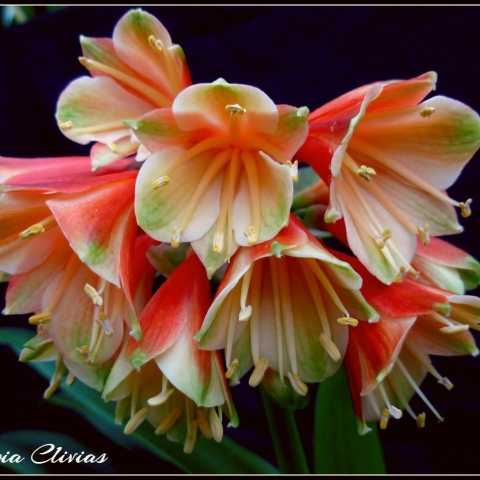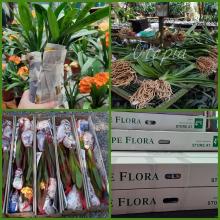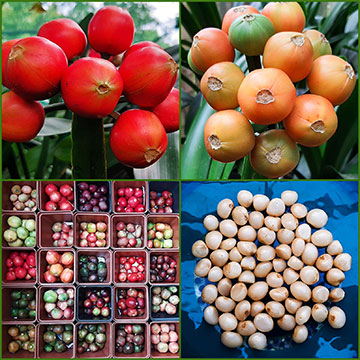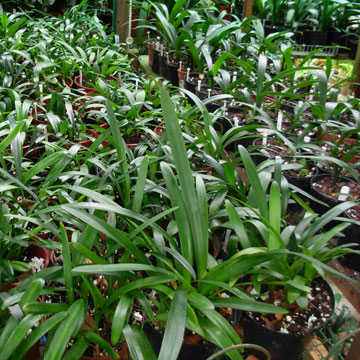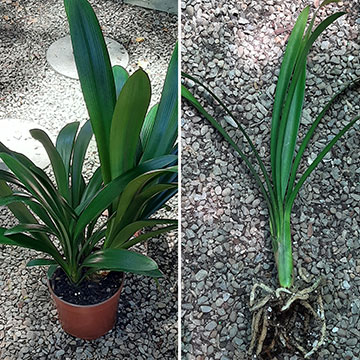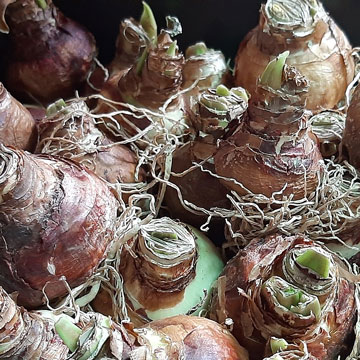Bells of Beauty – Interspecific Clivias (written by Carrie Kruger Utopia Clivias, South Africa)
These days, with the spread of Clivia around the world, numerous different types of interspecific hybrids are now increasing in accessibility. We can thus enjoy observing interspecific hybrids in public places as well as in our own gardens or collections, and, if we wish, also create our own hybrids.
While Clivias can be enjoyed either as pot or garden plants, some of us will also be interested in the hybridization of Interspecific varieties. When colour mutations, leaf variations and other genetic variations within the six species are taken into consideration, an endless array of breeding possibilities exist.
Although the Interspecific Clivia is not well known to the general public, they are grown and collected by most Clivia growers all over the world.
What are interspecific Clivias?
These are plants that have been bred from crosses between the different Clivia species.
The resulting Clivia is then referred to as an interspecific. This is a new trend in breeding Clivia which may flower at different times of the year.
The flowers are pendulous, but larger and more open than those of the original wild species. In second and third generations flowers become larger with more flared or open flowers.
These plants can flower any time between May and September yearly, with the main flowering time in July when Clivia clubs have small interspecific shows and displays to promote these plants.
How do we breed/create Interspecific Clivias?
Among the various exciting prospects for the development of the genus Clivia in the coming years, surely one must be the further advancement of Clivia interspecific hybrids involving crossings of the existing species – C. caulescens, C. gardenii, C. miniata, C. mirabilis, C. nobilis, and C. robusta.
C. miniata, with its many variations, is used as the seed or mother parent and then crossed with one of the pendulous species, but it is also sometimes used at the pollen parent.
Cultivation and care
- Interspecific Clivias are no different to growing Clivia miniata when it comes to cultivation requirements.
- They require water once a week if it does not rain during the hot months.
- In winter water sparingly and only if necessary.
- The best planting mixture consists of a well-drained mixture of fine and coarse bark, filter sand, polystyrene and “Flexi Coat” slow release fertilizer.
- Mature plants are fed with Hyper Feed every 3-6 months
- Seedlings and young plants are fed with liquid fertilizers for example “Kick Start” or “Sea Grow” every 8 weeks.
- Plants are treated with a systemic insecticide and fungicide once every 6 months
Advantages of Interspecific clivia hybrids:
- They multiply well.
- They are robust, fast growing and more resistant to pests and diseases.
- Expansion of the flowering period of Clivia, with the interspecific types predominantly flowering from June to August, and with some of them producing another flower stem during another season. Certain varieties may produce two to three flowers a year;
- Great diversity of flower form, with new flower shapes and umbels, eg, semi-pendulous flowers; upright tubular flowers or bell-shaped flowers
- Different leaf combinations
- New colours and new colour patterns or combinations in flowers
- A hugely under-developed category of Clivia, thus allowing much scope for new creations.
- They are fast growing and more disease resistant than Clivia miniata .
- Most of the new and unusual colours in Clivias originate from interspecific breeding
There is considerable potential for the development of Clivia with more growing and breeding of interspecific hybrids.
Many growers believe that the future of Clivia lie hidden in these genetics. Clivia breeders consider interspecific breeding as the “new age” of breeding
We continue to be stimulated by seeing some of the fantastic new crosses arising from hybridization that is being done locally, nationally and internationally.
